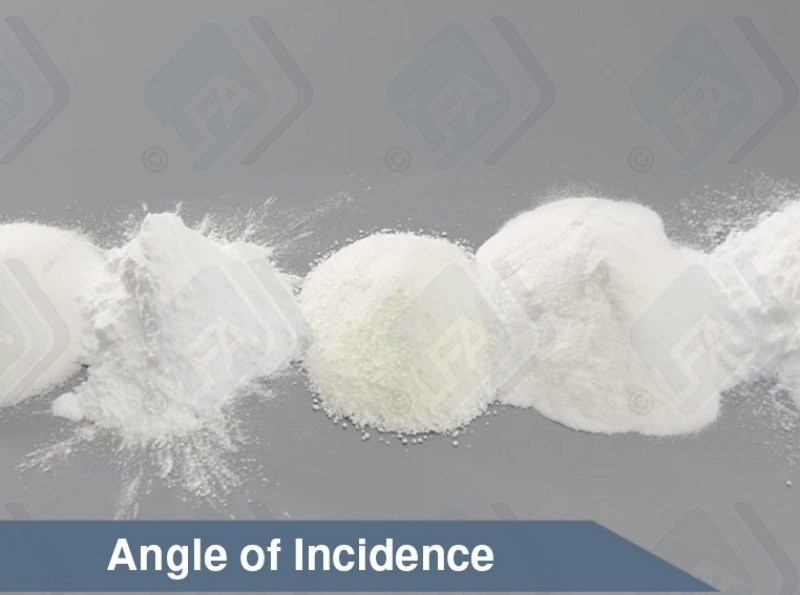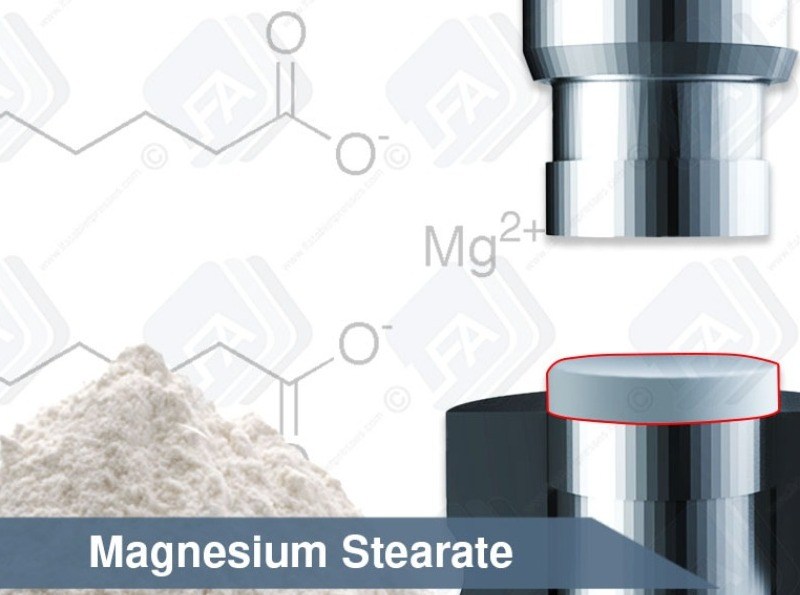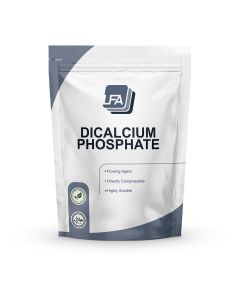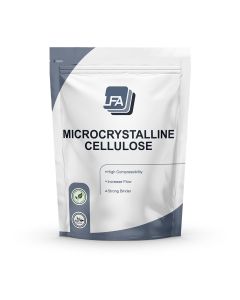Il magnesio stearato è una polvere fine di colore bianco. Il suo scopo principale è quello di fornire lubrificante a capsule e compresse. Aumenta la fluidità, che assicura efficienza durante il processo di produzione.
Il magnesio stearato è uno degli agenti lubrificanti più popolari del mercato. E' popolare grazie alla sua efficacia come lubrificante secco. E' inerte e può rendere il processo di formulazione più semplice.
Il magnesio stearato è un sale di magnesio, che ha anche acido stearico. L'acido stearico è un acido carbossilico che si trova spesso nel cibo. Gli stearati rappresentano una parte naturale di ogni singolo tipo di grasso, animale o vegetale. Si tratta di un acido grasso comune, che si trova nel pesce, nei cereali, nelle uova, nel burro, nel pollame, nella carne e nei latticini. Nella carne, rappresenta un-terzo dei grassi saturi. E' importante per la familiarità dei consumatori. Raffigura anche la sicurezza di questo ingrediente. Non è qualcosa di nuovo nel corpo umano. Ed aggiunge un elemento di sicurezza al prodotto.
Perché utilizzare lubrificanti?
Il lubrificante è essenziale nel processo di creazione delle compresse. Questo è il motivo per cui il magnesio stearato è così utilizzato. Lo scopo del lubrificante è quello di migliorare i vantaggi del processo specifico. Il lubrificante ha tre ruoli importanti.
-
Riduce la frizione durante l'espulsione tra la superficie delle compresse e la parete di stampo. Questo riduce l'usura delle compresse.
-
Previene che la soluzione aderisca alle parti del macchinario in cui scorre.
-
Incrementa il flusso, riducendo la frizione tra le stesse particelle.
Un eccellente lubrificante forma un forte strato sulla superficie. Un altro fattore positivo, è rappresentato dal poter modificare le variabili di processo. Le variabili di processo sono le parti dinamiche del processo, che possono essere modificate in un dato modo. Questo è spesso il flusso, la pressione e la temperatura. Se si verifica uno qualsiasi di questi cambiamenti, non influenza il processo di produzione.
Il magnesio è una parte importante della salute. Si tratta di un minerale essenziale che spesso manca nella dieta, nonostante possa essere trovato in molti alimenti. Aiuta a mantenere a giusti livelli lo zucchero nel sangue e la pressione sanguigna. Aiuta il DNA e le proteine, e fa funzionare correttamente i muscoli e i nervi. Le donne hanno bisogno di 320 milligrammi di magnesio al giorno, mentre gli uomini 420, per mantenersi in salute.
Il magnesio stearato è:-
Gestione dello stearato di magnesio
Gli stearati possono essere prodotti attraverso la idrogenazione (il trattamento con idrogeno). Il risultato di questo processo è un prodotto che dovrebbe essere maneggiato correttamente.
Il magnesio stearato non può essere mischiato con l'aria, poiché potrebbe esplodere. Deve essere tenuto lontano dalle fiamme a qualsiasi costo. Se è secco, può caricarsi elettrostaticamente tramite movimenti vorticosi e altre azioni. Se inalato, può causare tosse e se ingerito, può verificarsi vomito. Utilizzare guanti di protezione, occhiali protettivi e maschera per maneggiare questo prodotto.
La formula chimica del magnesio stearato è Mg(C18H35O2). Altri nomi con cui è noto lo stearato di magnesio sono l'acido ottadecanoico e sale di magnesio.
In genere, questo prodotto è la scelta migliore come lubrificante secco. Inoltre, è un minerale adatto per il corpo umano e può essere consumato in completa sicurezza e su base regolare. Potrebbe essere l'eccipiente perfetto per il vostro prodotto-
Are all excipients safe for all ages to consume?
Yes, it does not matter what age, size or sex the person consuming the products is. It is, however, important to check the intolerance data.
Are all the excipients safe for human consumption?
Yes, all of the excipients are safe for human or animal consumption. There are some precautions that should be taken when handling them and there are some people that might have intolerances to some of them. Information on this can be found in the products MSDS and Intolerance Data Sheet. This can be found in this section for every excipient.
Sono il tuo Eccipienti naturali?
Sì, tutti i nostri Eccipienti sono estratti da fonti naturali. Per ulteriori informazioni, si prega di visitare la pagina di ciascun prodotto.
Can I get a better price for excipients than is listed on the website?
Yes, we have bulk pricing for all of our excipients, and these can be found in this section. We offer bulk in 500 kg, 1 ton, 2 ton and 5 ton lots. The prices are set on these quantities as these are the amounts that will fit on pallets.
Can I have a CoA for my Excipient?
Yes. CoA stands for Certificate of Analysis this is also known some times as an MSDS (Material Safety Data Sheet) all of the information contained in a CoA is inside the MSDS for every LFA product which is emailed to you after purchase.
Posso produrre compresse senza Eccipienti?
È improbabile che si sarà in grado di produrre tablet senza l'utilizzo di uno qualsiasi degli Eccipienti. Alcuni prodotti si legano senza Eccipienti, ma poi non passano attraverso la macchina. Si consiglia di utilizzare un
Dissolving rate? Any known factors that can affect the rate, speed up or slow down the breakdown of a tablet?
Yes. There are two things at play here. You can get hygroscopic and hydrophobic excipients. Hygroscopic means that they take on water quickly, while hydrophobic means that they repel water.
There are products know as supper disintegrants. These products help the breakdown of tablets. At the moment LFA does not sell any supper disintegrants.
Magnesium stearate is hydrophobic this means that it will slow the breakdown of a tablet.
However, it is used in such small amounts that most of the time it will not make a difference to our customer's products. If they would like to be sure then they should conduct what is known as a disintegration test.
How long is the storage period of each excipient? What is the shelf life?
Firmapress - 2 years form batch date.
Dextrose - 3 years from batch date.
Dicalcium Phosphate - 3 years from batch date.
Microcrystalline Cellulose -
Magnesium stearate -
Lactose - 2 years from batch date.
Silica Dioxide - 2 years from batch date.
How should I clean contact parts that have come into contact with my excipients or active ingredients?
here are 6 steps that should be followed as a general rule of thumb when cleaning contact surfaces that have come into contact with powders:
Dry Clean - First you need to remove as much of the dry powder as possible. You can do this using a hover/vacuum. Make sure that the vacuum you are using has a filter good enough to handle fine dust.
Wet Clean - Next you need to perform a wet clean. This can be done with warm water and soap or if available an ultrasonic cleaner.
Rinse - Next you need to rinse off any soap with potable water (drinking water). You do not have to do this if you used an ultrasonic cleaner in the last step. It is important to ensure that all parts are thoroughly dried immediately after washing to avoid any rusting.
Sanitise - Next you need to sanitise the surface. This step is recommended by the FDA. There are a number of sanitising solutions available designed to be applied and left on.
Lubricate - You now need to lubricate any parts that require it. This should be with the appropriate grade oil or grease considering your use and greasing chart. Store - Finally store any of the parts in a cool dry place. If you are storing them on the machine then make sure the machine is in a temperature controlled environment with low humidity.
Qual è la differenza tra la gamma di eccipienti?
Offriamo Cellulosa Microcristallina, Stearato di Magnesio, Fosfato Dicalcico e Firmapress nella nostra gamma di eccipienti.
Cellulosa microcristallina, un legante, che detiene il contenuto del tablet insieme.
Il Fosfato dicalcico è un fluire di agente e aiuta a spostare ingredienti attraverso la macchina prima sono compressi.
Stearato di magnesio è un lubrificante secco e aiuta di nuovo con il movimento degli ingredienti attraverso la macchina, ma aiuta anche con l'espulsione di compresse dalla macchina. Siete pregati di notare che il Magnesio Stearato non associa se stesso.
Firmapress è un tutto in un mix di Cellulosa Microcristallina, Stearato di Magnesio e Fosfato di calcio.
What is the mesh size of your excipients? etc.
Dextrose - approx 100 mesh
Dicalcium Phosphate - approx 100 mesh
Microcrystoline Cellulose - approx 120-200
Magnesium sterate -
Lactose - 80 mesh
Silica Dioxide -
Firmapress - 100-200 mesh
What kind of agent is each excipient?/ What is the main use of each excipient?
Dextrose - Sweetener, binding agent, good for chewable tablets or candy.
Microcrystalline Cellulose - Binder, filling agent. Good at binding tablets and making them bigger. It can also be used as a filler for capsules.
Magnesium stearate - Dry Lubricant. This stops products from getting stuck to the tooling. It can also help with powder flow issues and caking issues.
Lactose - Binder, sweetener and bulking agent. It has a large mesh so it flows well but most people do not like it because of the intolerance issues.
Silica Dioxide - Flowing agent. This assist powders in flowing smoothly through the machines. It also helps with cacking issues where powders get stuck to the machine.
What kind of condition should excipients be stored in?
Firmapress - 2 years form batch date.
Dextrose - 3 years from batch date.
Dicalcium Phosphate - 3 years from batch date.
Microcrystalline Cellulose -
Magnesium stearate -
Lactose - 2 years from batch date.
Silica Dioxide - 2 years from batch date.
Which excipient should I add if the product doesn't bind well?
If your product does not bind well then we would recommend using MCC. This can be used in any % the limiting factor is the size of the tablet.
If the amount of MCC you would have to use would be too much or if you do not want to use MCC then you have 3 other options: Ask your supplier for a directly compressible or tabletable grade of your product. Spray dry your product. Wet granulate your product.
Which excipient should I add if the product is sticky?
If your product is sticky then you will need to add a dry lubricant to your mix. For this, we recommend magnesium stearate.
We do not recommend that you add more than 1% to the mix as more than this can cause capping. If your product is still sticky at this point then we would recommend looking into granulation.
Which excipient should I add if the product/API is clumpy?
If your product or API is clumpy then you will need to add an anticaking agent. For this, we recommend silicon dioxide. We only recommend adding a maximum of 2% of this to the mix









